There’s an old saying that one should never wear white after Labor Day. My garden is gleefully bucking that tradition; Labor Day has come and gone, but snowy blooms abound! Autumn is a rich time in Central Texas gardens: a little rain (very little) and gentler temperatures, (somewhat…), are just the ingredients for September and October floral madness. All the flowers are lovely, but cool white flowers are radiant in the autumn sun.
Once my front garden became a full sun space, Gaura, also known as Butterfly Gaura, Oenothera lindheimeri, was a plant on my must-have list.
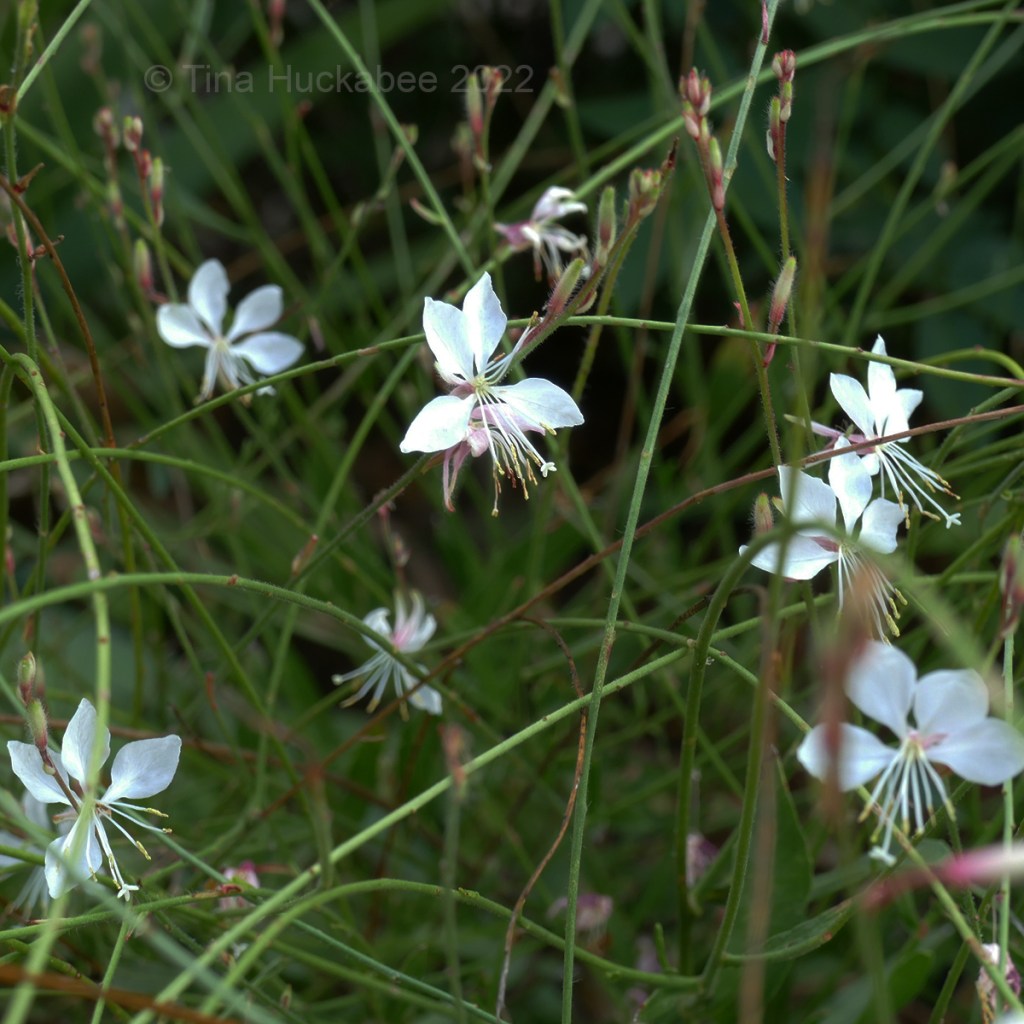
The flowers look delicate and sweet, but this long-blooming perennial is tough and a sunshine-n-heat lover. It’s also proved a great pollinator plant. I’m hoping for a seedling (or several) for more gaura goodness in my garden.

Mexican Orchid tree, Bauhinia mexicana, is also in full-bloom mode, though like the Gaura, it’s bloomed throughout this long, hellish summer.
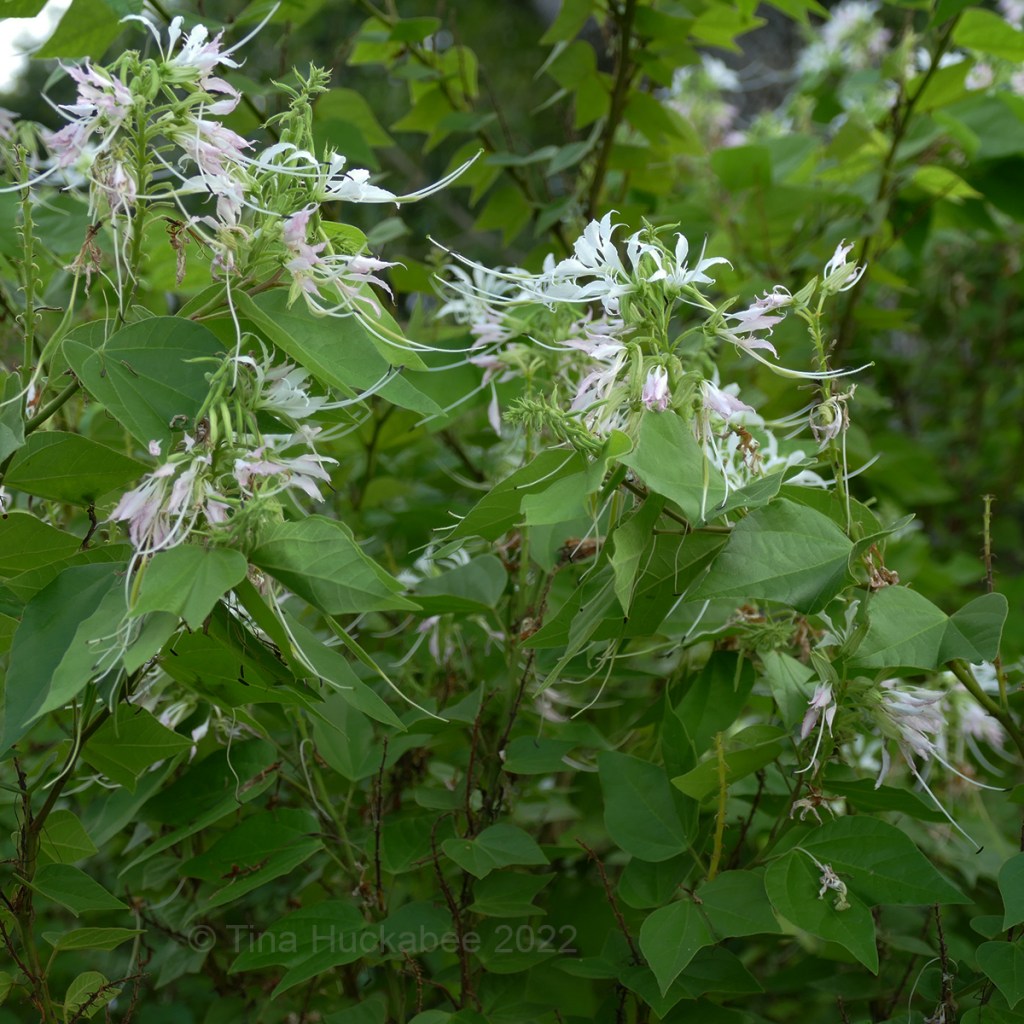
While I’m touting the virtues of white blooms, you’ll notice that both the Gaura and the Orchid tree sport blooms with a slight blush of pink.

The front garden Orchid tree sits among some Martha Gonzales roses and Mexican Honeysuckle, Justicia spicigera. A couple of volunteer White Tropical sage plants, Salvia coccinea, have joined the crew, adding more dollops of cream in the garden.

Garlic Chives, Allium tuberosum are reliable bloomers in late summer and early fall. Typically, it’s a challenge to find a cluster without an attending honeybee–they love this plant! I’ve always wondered what honey produced exclusively from chives would taste like. Amazing, I imagine. In addition to attractive foliage and sweet, snowy blooms, the chives are also edible: bulbs, leaves, and flowers!

An old-fashioned pass-along plant, Four-o-clock, Mirabilis jalapa, is happily blooming white, dainty flowers while invading the space of a Soft-leaf Yucca.
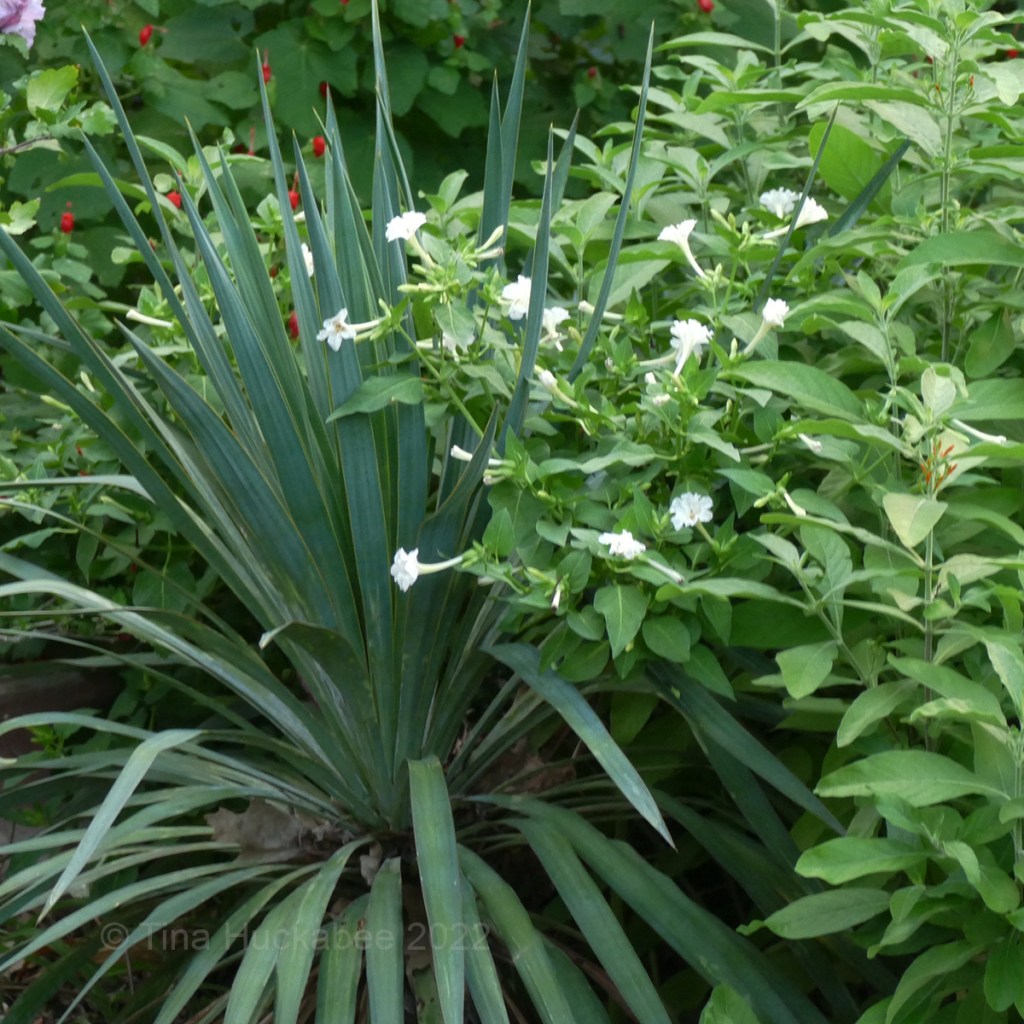
The Four-o-clocks open in late afternoon, providing for nighttime pollinators, specifically Sphinx moths. By mid-morning they’ve closed up shop and new blooms will open later in the day.

I also grow a deep pink four-o-clock–a stunning color–but it’s the white flowers that are blooming beasts.
Softleaf Yucca, Yucca recurvifolia, are favorite evergreen ‘staple’ plants in my gardens. Most of mine have resided in areas too shady for bloom development, but I like their size, their pretty blue-green foliage, and their ability to withstand heat, drought, and cold. I also appreciate that they’re not too spiky in the garden–I don’t like plants that hurt! I was content with them as an evergreen, architectural presence, only occasionally lamenting a lack of yucca flowers.
This one, near the pond in my back garden, has never bloomed, so when I spotted its bloom stalk, I was thrilled.

I’ve long accepted that the back garden yuccas would never produce any beautiful, bell-shaped blooms. But after the February 2021 deep freeze, one of my oak trees was damaged and now doesn’t provide the shade it once did. I’m guessing that maturity, plus a tad more sunlight, allowed the yucca confidence to send up its bloom stalk and flower.
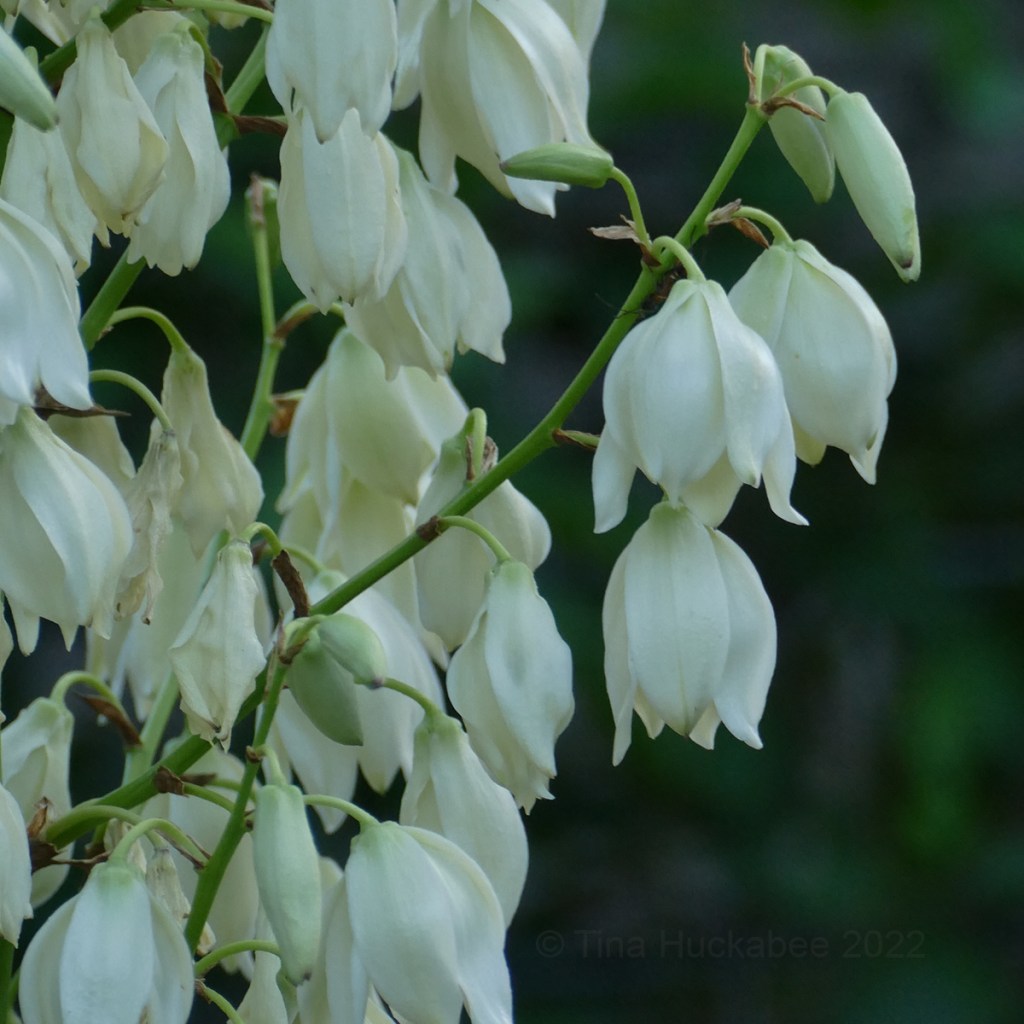
Nearly a year ago, I transplanted five small Softleaf Yuccas from my back garden to my front, newly full-sun garden, and look forward to their growth and future flower production. They’ll be quite happy in their new home: foliage and blooms–a win!
No Central Texas fall flower fawning is complete without mentioning Frostweed, Verbesina virginica. This stately perennial sometimes begins its blooming in summer (mine did) but the zenith of flowering usually occurs in October, well-timed with Monarch butterfly migration. Clusters of milky flowerets are magnets for a huge variety of pollinators.
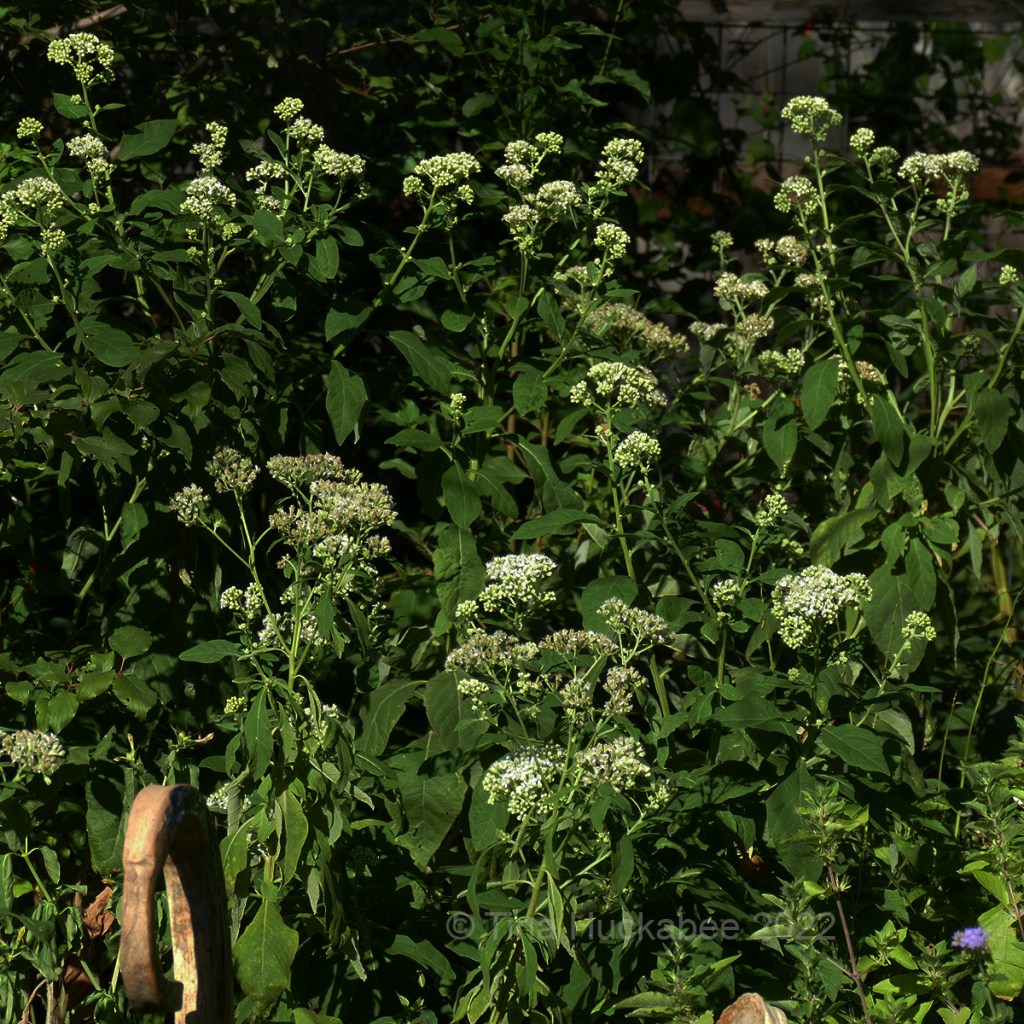
My honeybee gals are all over the Frostweed flowers, slurping the sweet stuff and gathering rich, creamy pollen.
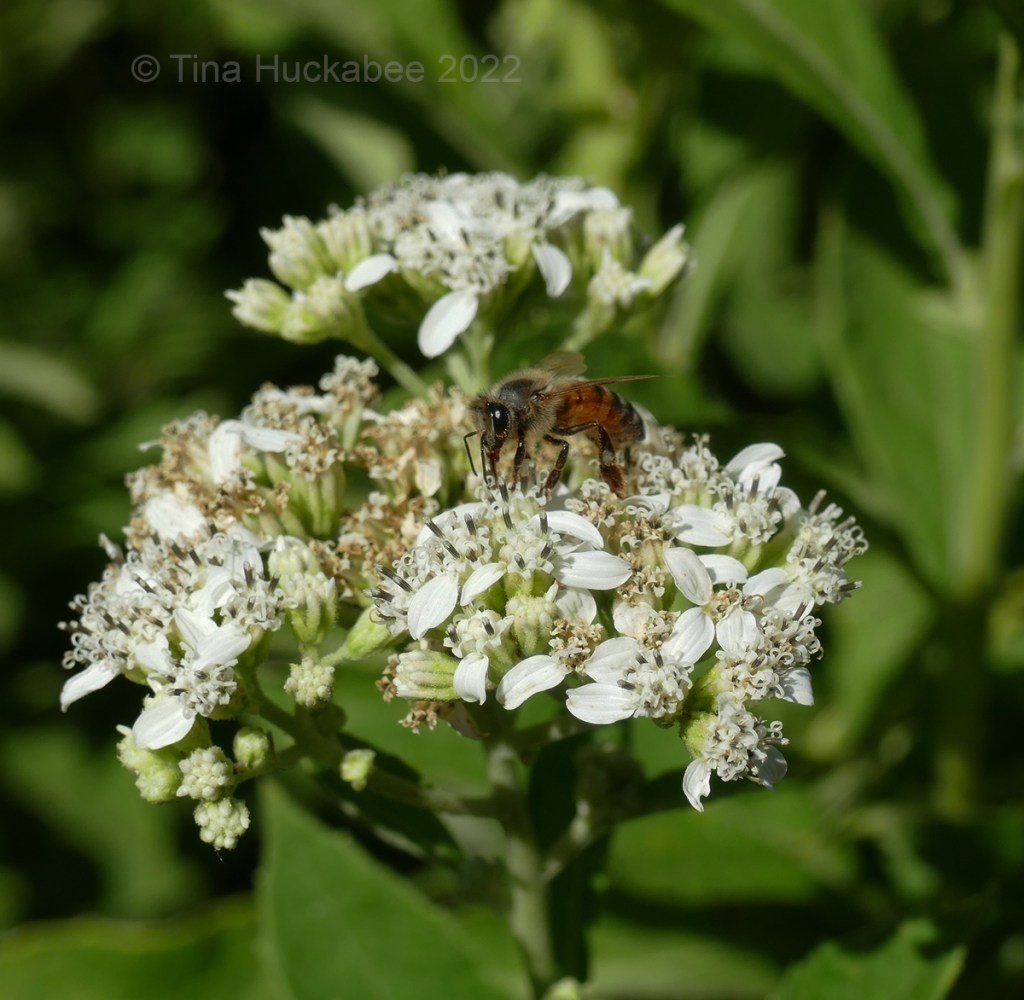
I like a garden with plenty of color and textural diversity. But in a colorful garden, white blooms have a place: cooling and calming, they temper brighter colors and are restful to the eye. Even in full sun, white blooms are luminous and beautiful.
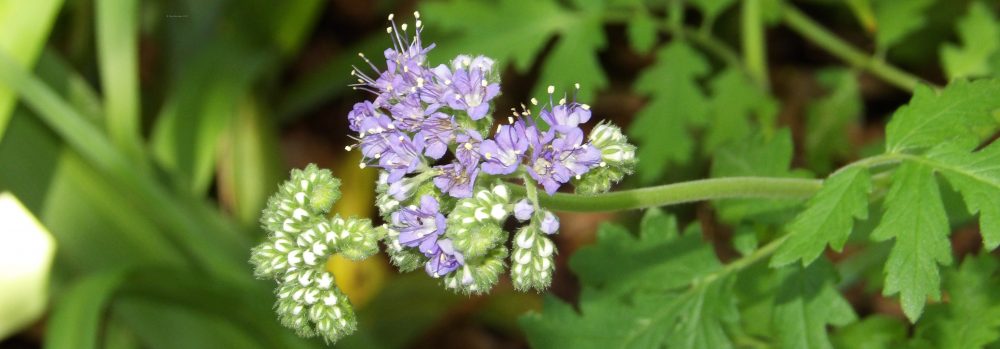
Lovely post, Tina. White adds balance and light to a garden space. My yucca plants that I inherited with the garden used to bloom reliably, but over 30+ years have become overshaded and no longer bloom. To add insult to injury, our now rampant deer population feasts on the leaves every winter, right down to nubs! Amazingly, they send out new leaves in spring and the process repeats. The deer also get every hosta, so I’m thinking of giving up on those as well. Sigh. Salvia, herbs and ferns will have to replace them.
LikeLike
Thank you, Eliza. The more white flowers I have in the garden, the more I love them.
Sorry about your deer. There are deer in parts of Austin, but not where I live. They can certainly be frustrating to garden with, the little dears…:)
LikeLike
Good old gaura: always a welcome sight. As your identification confirmed, the genus Gaura has lost its identity and the species formerly in it are now all in the genus Oenothera. A white-flowering plant I’ve recently seen here in the wild several times, including this morning, is Eupatorium serotinum, or late boneset. Have you planted any of those?
LikeLike
I read about the switch to genus Oenothera. Those botanists, always messing with names and categories! I haven’t grown the E. serotinum, but I used to have a Ageratina havanensis, Shrubby Boneset or White Mistflower in my back garden. The area became too shady, and I gave it to my sister-in-law. It’s doing okay in her garden, though I think it would still like more sun. I was planning to put another in my front garden last fall when I replanted, but I’ve run out of room. I need to figure out a place for one of these white mistflowers, they’re so lovely and such good pollinator plants.
LikeLike
Well, . . . white ‘is’ my favorite color, so, . . . .
LikeLike
I guess you’d be a fan of white flowers, then, eh?
LikeLiked by 1 person
As you are my go-to standard bearer, a quick question. Did you provide more supplemental water to your natives as the hot dry summer progressed? And if so, was it on a schedule or ad lib as the temperature and their appearance dictated? Because your abundance of white blooms is awe inspiring! We have survivors here, but not many “thrivers!”.
LikeLike
Yes, this ‘new’ front, full-sun garden received water once every 7-10 days. I have soaker hoses winding through the garden, so there’s little waste. I didn’t water regularly until sometime in July, though. I could have watered less and my established plants would have been fine, but with 60% of the area all new plants, many small seedlings and all in full sun, the area really needed water. Interestingly, though not surprising, things are very dry now. We’ve just gone so long without rain.
LikeLike
I had the same thought about water. So many of the ‘whites’ that I love are either absent or not at all thriving out in the wild: the gaura and the orchid tree particularly. I suspect that life in a garden is easier than life on a sun-drenched and bone dry prairie!
The garlic chives surprised me. I didn’t think any of our wild onions or chives bloomed in fall; I’d always associated them with spring. The answer may be that they’re not native. If they’re Allium tuberosum, they’re exotics from — China!
I chucked at your no white after Labor Day reference. That was an iron-clad rule when I was growing up. I’ve loosened up a bit here in Texas. After all, if it’s 95 degrees and humid as can be, who cares what the date is?
LikeLike
Ahem — that would be ‘chuckled,’ although the rule does deserved to be chucked…
LikeLiked by 1 person
I’m pretty sure my garden is better taken care of than those plants in the wild! That said, when it was shadier, I didn’t water all that often, maybe 3-4 times in a summer. I suspect the orchid tree that you’re seeing in the wild is a cousin to mine, which is not native, but Mexico. The native Texas orchid is Anacacho Orchid (Bauhinia lunarioides) https://www.wildflower.org/plants/result.php?id_plant=balu
I grow the Mexican Orchid because years ago I volunteered at Zilker Botanical Garden and one day helped in the Prehistoric garden. There were scads of tiny orchid tree seedlings and the person in charge gave me an itsy-bitsy seedling (literally, it had 2 tiny strands of root and a couple of leaves). I planted it in my back garden because, unlike the Anacacho, the Mexican can take some shade and will bloom. I planted the seedling in fall, it survived winter and the rest is history. The one in the photo is a baby of the mother plant. I’ve given away several other seedlings. Mine don’t seed out that often precisely because I don’t water all that much. I just love this little tree!
That’s interesting that you grew up with the ‘no white after Labor Day’ rule. I’m with you, light, loose clothing is a must in our climate.
LikeLike